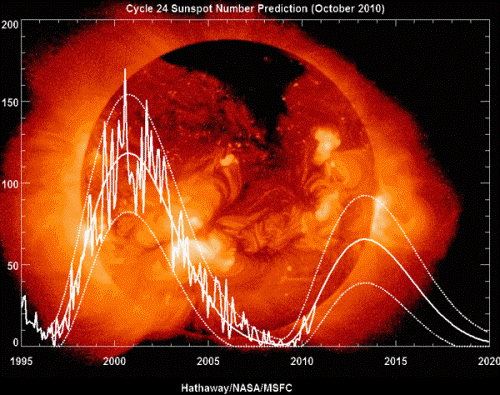This morning, Kepler mission scientists announced confirmation of a possible Earth-like planet located in the habitable zone of a star similar to our sun. The star, named Kepler 22, is classified as a G5 star and is 600 light years away; its planet is named Kepler 22b and has an orbital period of 290 days.
The habitable zone — or ‘Goldilocks’ zone — refers to a “just right” distance from a star for a planet to possess water in liquid form. The star, Kepler 22, is just a tad smaller and cooler than our sun. Kepler 22b appears to be located in the middle of the star’s habitable zone and preliminary estimates are that its surface temperature is around 21 °C (72 °F), making it rather pleasant from a human perspective.
Previous discoveries of Earth-like exoplanets in stars’ habitable zones — such as Gliese 581c and 581g — have been found mostly orbiting red dwarf stars.
More about Kepler 22b still to come!
Kepler 22b is just 2.4 times the radius of Earth (the smallest such habitable zone exoplanet yet discovered, but is considered to be a “super-Earth”) but its mass has not yet been calculated, so scientists can’t yet surmise if it is a rocky or gaseous planet, or what its gravitational “pull” is relative to our own.

Planets are typically named by adding an alphabetical letter to the name of the parent star, moving from a to b (etc.), as the sun’s planets progress further out into space.
This exciting discovery will help astrophysicists in their on-going hunt for more Earth-like planets beyond our solar system. The Kepler mission analyzes photometric data from over 150,000 stars, hunting for any tell-tale, stellar dimming that could indicate a smaller planet passing between it and our telescopes. Kepler was designed specifically for this planet-hunting purpose and the discovery came very shortly after the spacecraft became operational, much to the delight of Kepler team scientists.
Kepler principal investigator, William Borucki at NASA Ames Research Center at Moffett Field, California, stated:
”Fortune smiled upon us with the detection of this planet. The first transit was captured just three days after we declared the spacecraft operationally ready. We witnessed the defining third transit over the 2010 holiday season.”
More information on this discovery will be forthcoming in the next few weeks as mission scientists calculate the mass and conduct a spectral analysis of the planet’s atmosphere.
Candidate Planets Piling Up!
To date, the Kepler Space Telescope has found 1,094 more planetary candidates, increasing the total number to 2,326 — an 89% increase over the last planetary update from just this past February! The size breakdown on these candidate planets is as follows:
207 are near Earth size
680 are super-Earth size
1,181 are Neptune size
203 are Jupiter size
and
55 are larger than Jupiter
Apparently, the greater number of smaller planets (Earth size or ‘super-Earth’ size) than large, gaseous planets (like Jupiter) reflects a continuing trend in exoplanet discoveries.
However, only a fraction of such smaller, Earth-like planets exist in the habitable zones of their respective stars; as scientists redefine what the ‘habitable zone’ is to account for the possibility of atmospheric warming (which moves the habitable zone further out into space away from the parent sun), that number shrinks (note: though one would suppose that it increases).
Previously, scientists estimated that 54 such planets were within their sun’s habitable zone, but that number has been reduced to 48.
Still, the number of candidate planets of Earth-like size and mass has increased more than 200 percent from the previous exoplanet inventory.
Truly, we are living in a Golden Age of exoplanetary discovery!
The announcements were made at the inaugural Kepler science conference which runs from December 5-9 at the NASA Ames Research Center.
Author Note: Although relatively close by cosmic standards, the Kepler 22b is most likely too far and dim to detect any “signs of life”, such as “urban” lights, as postulated in a recent report Bright Lights on Alien Worlds May Indicate E.T. Civilization, or, the Kepler telescope may be insufficiently powerful. We may have to wait for the next generation of space telescopes to make this assessment — or get really lucky. It’s possible that a dark- adapted, radio wave-emitting, alien civilization lurks in our corner of the galactic neighborhood.
Top image: (Artist’s conception of Kepler-22b) NASA/Ames/JPL-Caltech



Clearly more such observational satellites as the Kepler mission is (uses) should be built and launched.